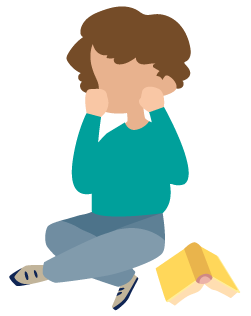Practical support for identifying and meeting need
Physical and sensory
What is vision impairment?
Vision impairment is a diagnosed visual condition which cannot be fully corrected with glasses or other medical intervention. Vision impairment can occur when part of the visual system does not develop properly, becomes damaged or does not work effectively.
What is the impact of a vision impairment?
A loss of vision can impact on a wide range of areas including:
How to spot children and young people with visual needs in the classroom
Signs of a possible vision problem in a student who hasn’t been diagnosed with a visual impairment may include:
- constant eye rubbing or chronic eye redness
- extreme light sensitivity
- squinting, closing one eye, or misaligned eyes
- poor focusing or trouble following objects
- inability to see objects at a distance
- inability to read a whiteboard or blackboard, etc., or difficulty reading
- tripping or falling frequently/bumping into things
- missing social cues
- not spotting their friends/familiar people from a distance
Common problems with sight
It is really important for children to have any visual needs treated. Some common problems are:
Near-sightedness and far-sightedness
These can usually be corrected with glasses or contact lenses. If left untreated pupils will hold objects either close to see (near sighted) or far away to see (far sighted).
Nystagmus
A wobble of the eye involving fast to and fro movements. This makes vision blurry and can make it difficult for students to see things clearly. This can’t be corrected with glasses.
Misaligned eyes (strabismus)
Images can appear blurred and it can’t be corrected with glasses.
‘Lazy’ eye (amblyopia)
Images appear blurred and it can’t be corrected with glasses – but can be treated in young children.
Cortical visual impairment
The eye can see clearly but the brain has difficulty interpreting the image and therefore looking at an object appears to take a long time before it is recognised. This can’t be corrected with glasses.
Peripheral vision difficulties
Part of the field of vision is “missing”. This can impact on an individual’s ability to travel independently, spot things at certain angles, pupils may misjudge steps or stairs, fall over and bump into things. This can’t be corrected with glasses.
Cataracts
Vision will be blurred and the pupil may appear to have a grey spot in the centre, sides or back of the lens. If left untreated, cataracts can lead to blindness. This can’t be corrected with glasses and requires surgery.
Top tips for supporting students with visual impairments
Here are some practical ideas on how to support children and young people with visual difficulties:
Where to go for more help
A registration of sight impairment is not needed for the visual impairment service to be involved with a child or young person.
Please click here for more information:




